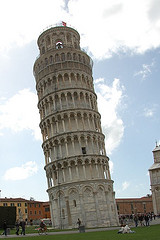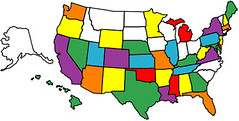
The U.S. social safety net continues to grab headlines, this week in the New York Times. We’ve noted before the play programs like food stamps are getting in the current presidential campaign. The NY Times article notes that, paradoxically, “Some of the fiercest advocates for spending cuts have drawn public benefits.” Why might this be?
An aging population and a recent, deep recession seem to be at the crux of the issue.
The problem by now is familiar to most. Politicians have expanded the safety net without a commensurate increase in revenues, a primary reason for the government’s annual deficits and mushrooming debt. In 2000, federal and state governments spent about 37 cents on the safety net from every dollar they collected in revenue, according to a New York Times analysis. A decade later, after one Medicare expansion, two recessions and three rounds of tax cuts, spending on the safety net consumed nearly 66 cents of every dollar of revenue.
The recent recession increased dependence on government, and stronger economic growth would reduce demand for programs like unemployment benefits. But the long-term trend is clear. Over the next 25 years, as the population ages and medical costs climb, the budget office projects that benefits programs will grow faster than any other part of government, driving the federal debt to dangerous heights.
As a result, many Americans have benefited from government safety net programs.
Almost half of all Americans lived in households that received government benefits in 2010, according to the Census Bureau. The share climbed from 37.7 percent in 1998 to 44.5 percent in 2006, before the recession, to 48.5 percent in 2010.
Yet many do not realize that it is no longer just programs for the “undeserving poor” that dominate the scene. Rather, it’s programs such as an expanded Earned Income Tax Credit and increasing Medicare costs that have stretched safety net resources.
Medicare’s starring role in the nation’s financial problems is not well understood. Only 22 percent of respondents to the New York Times poll correctly identified Medicare as the fastest-growing benefits program. A greater number of respondents, 27 percent, chose programs for the poor.
Why the misperception? Perhaps it’s because, as political scientist Suzanne Mettler explains in her book, The Submerged State: How Invisible Government Policies Undermine American Democracy, policies in recent decades have turned from more obvious provision of cash benefits to methods such as tax breaks, incentives, and other “hidden” forms of support. As a result, most citizens have no idea that they rely on the safety net at all.
No doubt politicians, commentators, and scholars will all continue to debate the form and function of the safety net. But everyday Americans aren’t at all sure what’s best to do.
Americans are divided about the way forward. Seventy percent of respondents to a recent New York Times poll said the government should raise taxes. Fifty-six percent supported cuts in Medicare and Social Security. Forty-four percent favored both.
As one Minnesotan profiled in the NY Times story put it, “I’m glad I’m not a politician…We’re all going to complain no matter what they do. Nobody wants to put a noose around their own neck.”







